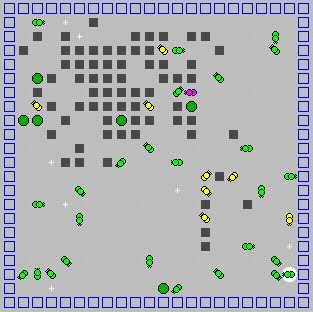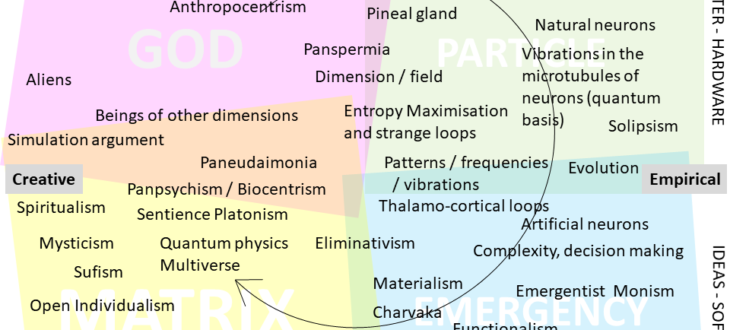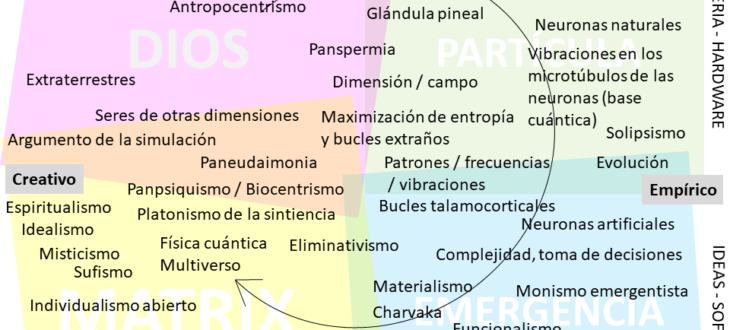English version (pending) Se puede decir que hay dos tipos de orgasmos: aquellos en los que podemos recordar perfectamente los niveles de placer, y otros …
Author: Manu Herrán
Metáforas del individualismo vacío

English version Videojuegos y simulaciones El procesamiento secuencial de los computadores con un único procesador (o los algoritmos no paralelos en general, que únicamente tienen …
Metaphors of empty individualism

Versión en Español Video games and simulations The sequential processing of single-processor computers (or non-parallel algorithms in general, which only have one thread of execution) …
A map of theories, approaches and paradigms related to consciousness, sentience and identity

Theories and hypotheses about the ability to feel Versión en Español See also this other map In this image I try to present in a …
Un mapa de teorías, enfoques y paradigmas relacionados con la consciencia, la sintiencia y la identidad

Teorías e hipótesis sobre la capacidad de sentir English version Ver también este otro mapa En esta imagen trato de presentar de forma global algunas …
El principito

English version Me pareció un libro cursi y falto de significado que explota el egocentrismo, manipulando emociones y sentimientos como la melancolía y la soledad, …
The litte prince

Versión en español It seemed to me a corny and meaningless book that exploits self-centeredness, manipulating emotions and feelings such as melancholy and loneliness, playing …
Assessment of transhumanism and technology from an effective altruism perspective based on hedonism

Versión en español Effective altruism is a philosophy and social movement that uses evidence and reasoning to determine the most effective ways to benefit others. Effective altruism encourages individuals to consider …
Valoración del transhumanismo y la tecnología desde una perspectiva de altruismo eficaz basado en el hedonismo

English version El altruismo eficaz o altruismo efectivo es una filosofía y movimiento social que aplica la evidencia y la razón para determinar las maneras más eficaces de mejorar …
Empty, Open and Closed Individualism

Versión en español Robert Anson Heinlein proposes in one of his novels (Time Enough for Love?) an anesthesia that does not eliminate pain, but the …